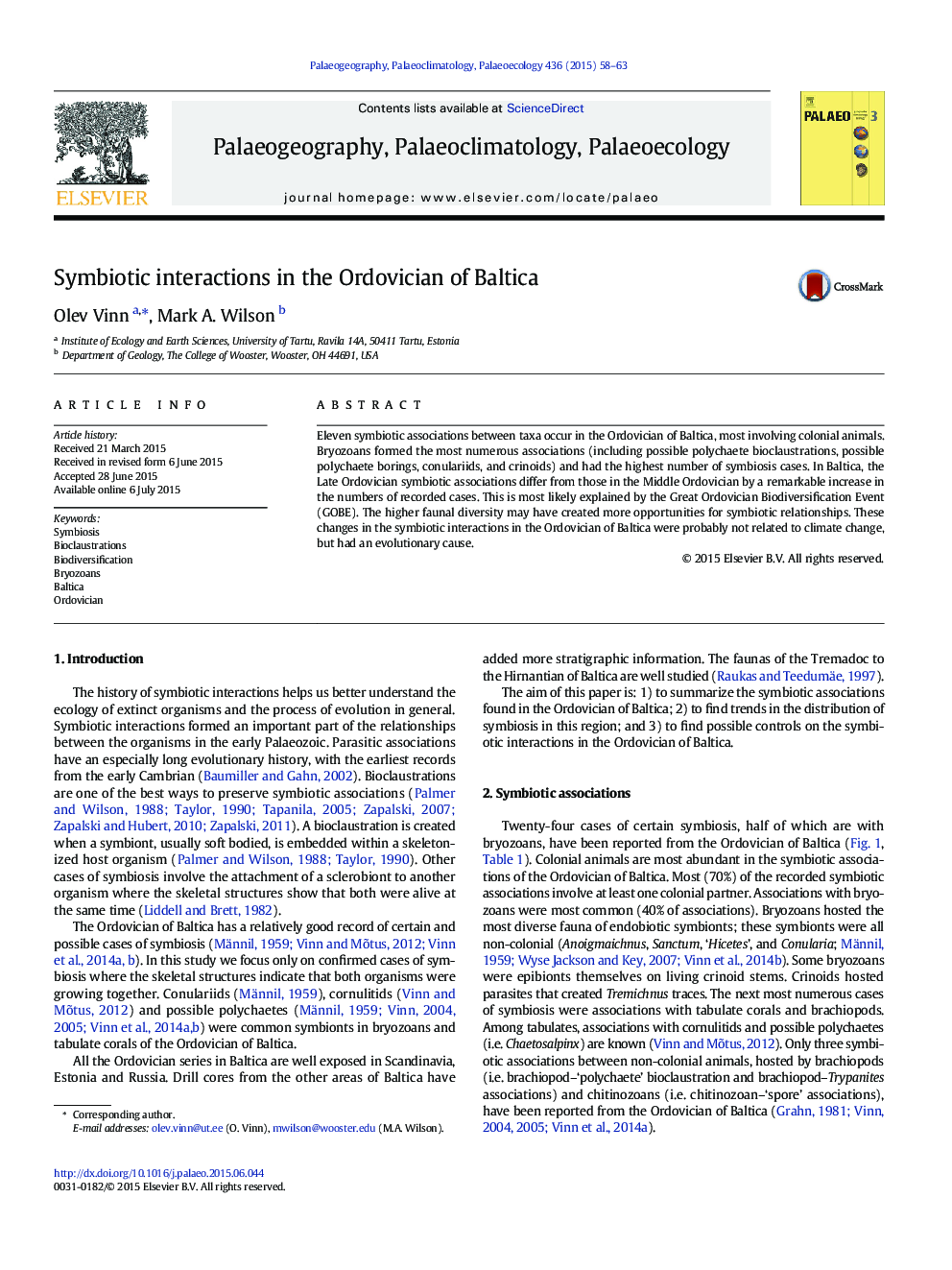| Article ID | Journal | Published Year | Pages | File Type |
|---|---|---|---|---|
| 4465895 | Palaeogeography, Palaeoclimatology, Palaeoecology | 2015 | 6 Pages |
•Earliest symbiotic interactions appeared in the Dapingian.•Symbiotic associations with bryozoans are most common.•Symbiosis was most common in the Late Ordovician.•GOBE presumably caused the increase in symbiosis cases.
Eleven symbiotic associations between taxa occur in the Ordovician of Baltica, most involving colonial animals. Bryozoans formed the most numerous associations (including possible polychaete bioclaustrations, possible polychaete borings, conulariids, and crinoids) and had the highest number of symbiosis cases. In Baltica, the Late Ordovician symbiotic associations differ from those in the Middle Ordovician by a remarkable increase in the numbers of recorded cases. This is most likely explained by the Great Ordovician Biodiversification Event (GOBE). The higher faunal diversity may have created more opportunities for symbiotic relationships. These changes in the symbiotic interactions in the Ordovician of Baltica were probably not related to climate change, but had an evolutionary cause.
